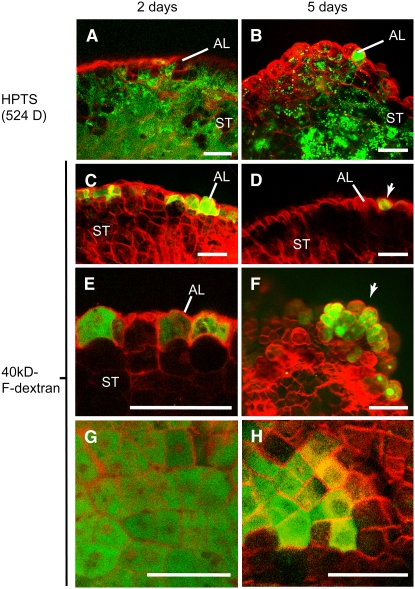Figure 8.
Cell-to-Cell Movement of Fluorescent Tracers in in Vitro–Grown Maize Endosperms.
(A) and (B) Endosperms grown in vitro for 2 d (A) or 5 d (B) allow the movement of HPTS through both differentiating aleurone (AL) and starchy endosperm (ST) cells.
(C) to (H) In vitro–grown endosperm incubated in 40 kD of F-dextran. The tracer is able to move only through the aleurone cells of endosperms cultured for 2 d ([C], [E], and [G]) or 5 d ([D], [F], and [H]), but the movement is highly reduced in the latter. Most of the aleurone cells that contain the 40-kD F-dextran in the 5-d-in-culture endosperms are located at growing bulges at the endosperm surface ([F], arrow). (G) and (H) show paradermal views of the aleurone layer in endosperms grown in vitro for 2 d (G) or 5 d (H). Note the reduction in the aleurone cells containing the 40-kD F-dextran tracer in the older endosperms.
Bars = 100 μm.

